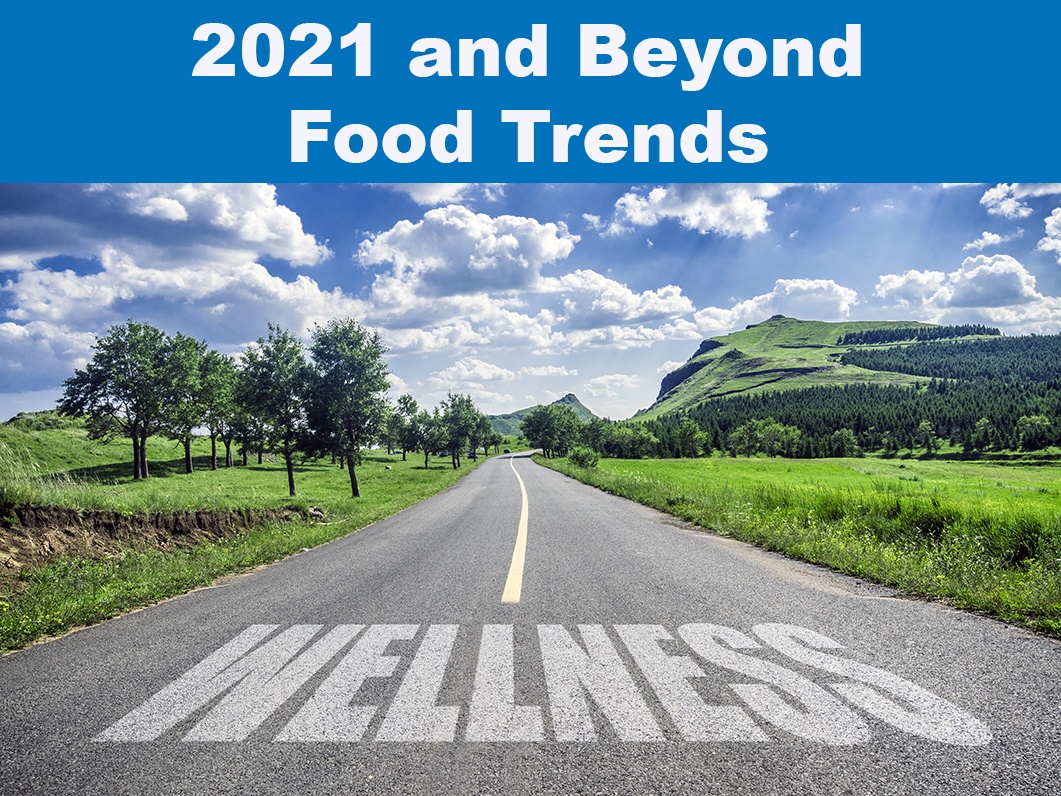Third and last of a series
We’ve been sharing some truly insightful information from a recent article published at forbes.com, accessible in its entirety at https://www.forbes.com/sites/phillempert/2020/10/19/food-trends-2021-staying-healthy-in-a-post-covid-19-world/?sh=64f74265485b, that has to do with food trends that have resulted from the COVID-19 pandemic. In the Forbes story, which was written by contributor Phil Lempert, an even-handed look is presented on what has come to the fore and what we might expect.
Lempert’s website is https://www.supermarketguru.com, and he brings decades of first-hand knowledge to the table. His own background is in food, retail and ag, and in the Forbes piece, “Food Trends Forecast 2021: Being Healthy in A Post Covid-19 World,” Lempert looked closely at what he called the “frailties of the food world and its supply chain.”
He said that we can all expect “to see more plant based and plant forward foods,” noting that we will “see a shift to more wholesome carbs from whole grains, ancient grains.”
And, Lempert said “Much more attention will be given to foods that contain Vitamin C and supplements to boost immunity.”
He said “blended foods” that combine protein sources with vegetables, i.e., the blended burgers of the James Beard Foundation that mixes mushrooms and ground beef, will be increasingly in demand.
“Think flexitarians versus vegans,” Lempert said. “It’s not about extremes – it will be the about balance between animal and plant protein.”
He also expects new products that are being designed to “meet the needs of the pandemic shopper” to appear on shelves, including more products to help us “relax and unwind before bed.” One such relaxant was introduced in the form of Pepsi’s Driftwell, which is enhanced water with 200 mg of L-theanine and 10 percent of the adult daily value of magnesium, this “from a brand that was built on caffeine and high fructose corn syrup.”
It seems that consumers are not only eating at home more but also managing their health there as well. Lempert cited early research published in Nutrition & Dietetics in late June 2020 that indicated telehealth in Australia “keeps patients compliant with care regimens to improve health outcomes.”
Among the impactful results are these findings: “When compared to a traditional group weight loss program, those engaged in a telehealth program lost similar amounts of weight over six months; and “A meta-analysis found telephone-delivered nutrition counseling is effective in improving eating patterns of individuals with chronic conditions. Half of telephone programs in published literature are with individuals with diabetes, heart disease, cancer, chronic kidney disease and osteoarthritis.”
The research also showed that a web-based study in seven European countries “found that diet quality, as assessed by the Healthy Eating Index 2010, improved across the three-month trial and was maintained for an additional six months – due to telemedicine.”
Here in the United States, Kroger Health has launched a telenutrition service that is free for the duration of the pandemic “to help customers navigate the new normal.” As part of its contribution, the Kroger Food as Medicine platform offers: “Unlimited free virtual consultations with a registered dietitian via video chat, using the code COVID; personalized support and plans for individuals and families; and “management of food-related health issues”
Lempert’s piece said that Texas “has the most uninsured adults and the third-most uninsured children in the U.S., according to Wallethub. So when grocer H-E-B launched telemedicine with the partner MDBox app in the summer of 2019, it was a welcome affordable solution. Walk-ins can have a video-chat doctor visit at the pharmacy counter within 30 minutes for less than $50.”
And meshing with the telemedicine is food technology, which provides information and education that can be offered to shoppers.
For instance, he wrote, “Packaging will contain more QR codes that can verify product and ingredient claims, DNA kits will continue to evolve well beyond where they are now – but the import of the shopper themselves will be paramount to their success. Viome, for example, a kit that focuses on gut health, produces two reports for a shopper, one that focuses on what you should and should not eat, and the other focused on the traits in our bodies and what they mean.”
While each report is about 100 pages long, “far too complex for the average shopper to understand or to follow,” Lempert said it is possible to take “that kind of information and embed it within the shopping experience, easily and simply – and see what magic can happen.” He said that Viome has launched a new product in the form of personalized supplements based on an individual’s needs to correct “gut related issues.”
And the upshot is unmistakable. “One thing for sure is that the pandemic has brought families together to eat together, to communicate and spend more time together,” Lempert said.
The FMI Family Meals effort, accessible at https://www.fmi.org/family-meals/, “has long promoted the benefits to health and to society and the pandemic has given the effort more substance and reason to embrace,” he said.
Findings from FMI show “eating together as a family helps kids have better self-esteem, more success in school, and lower risk of depression and substance-use disorders.” Moreover, “Kids that learn to cook eat healthier as adults. If they learn by ages 18-23, they eat more vegetables, less fast food, and more family meals a decade later.”
Also, “Home preparation of more plant-based proteins such as dry beans and lentils, tofu, and homemade veggie burgers are helping shoppers discover that good nutrition can be delicious.”
The findings also note that, “people are eating more local foods in response to supply chain issues early in the pandemic.”
And,“Changing mindsets about wellness now include self-compassion. Eating is one of the basic ways we care for ourselves. And disruptions in food and activity routines have people thinking about how they redefine wellness.”
Lempert concluded, “The supermarket world is changing, and as we look around us – around the entire globe – we need to open our eyes and imagine what it possible – and understand that everything has changed and through smart food technologies we can improve the health and wellness of every shopper!”
From an OnionBusiness perspective, we think you’d agree that onions fit this “changing” world pretty well as Mr. Lempert spells it out. Of course, onions have stood the test of time. This time shouldn’t be any different.


